The Article
BOSC Monoblock Amplifiers from Orchard Audio
27th February 2020
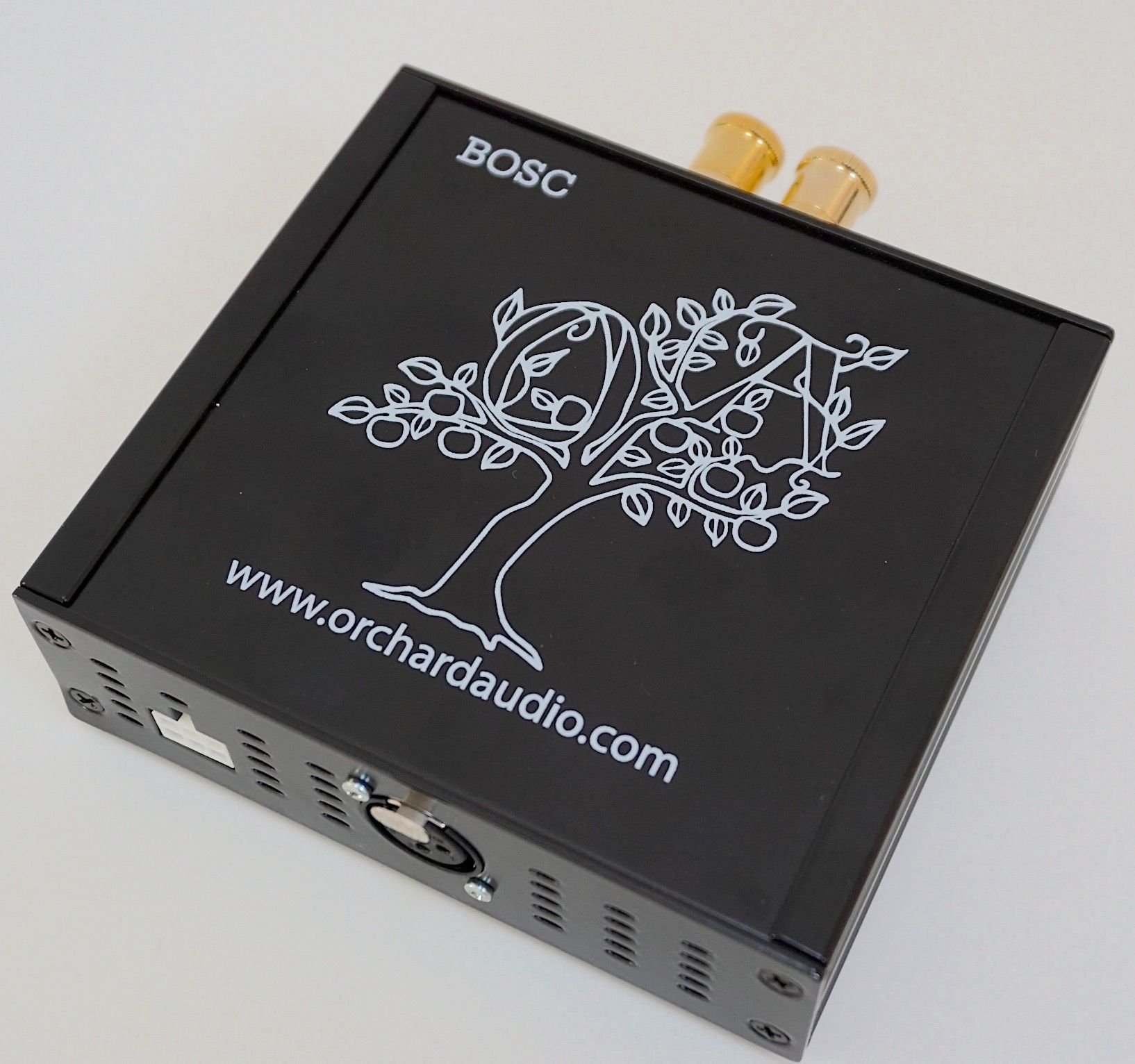
Using gallium nitride (GaN) technology, Paul Rigby reviews these small form factor monoblock power amplifiers
They are certainly intriguing and Class D to boot. There are wrinkles here, though and I talked to the owner/designer, Leo Ayzenshtat about them, “Traditionally high-performance amplifiers are big, bulky and difficult to handle,” he said. “This is where BOSC comes in. BOSC has the performance of linear amplifiers (i.e. class A, B and AB), but unlike them does not weigh tens of pounds and does not double as a space heater.”
Orchard decided to use GaN transistors for the amplifier’s Class D output stages rather than, for example, MOSFETs to, “…increase the slew rate, reduce the ringing with fast input signals when loaded into reactive speakers and offer faster overload recovery times.”
BOSC is an analogue amplifier with the PWM (Pulse Width Modulation) being determined in the analogue domain. The PWM is then amplified by the GaN power stages. In this respect, BOSC could be seen as being different from those Class D designs that use digital modulation techniques employing processors, FPGAs and DSPs.
The guts of the BOSC amplifier is contained in the chassis. Made from 5052 aluminium, it is powder coated in black, chosen to keep weight down and allow for portability.
I wanted to know why the chassis and amplifier was designed with its very specific form factor, “I tried to make an amplifier that was very versatile and allowed for many placement options,” said Ayzenshtat. “The design allows users to place the amplifier right next to the speaker, eliminating long speaker cables and preserving the amplifier’s high damping factor (low output impedance).”
Sure, that’s an option but it didn’t work for me – no matter what cable types I decided upon. Nor would it work for those only looking to install RCA interconnects. I don’t agree with having external, power amplifiers “right next to the speaker”, because of potential noise migration, vibration and so on which, from my perspective, decreases the benefits of very short cabling lengths and increases the potential budget to find isolation solutions in that position.
Hence my BOSC amplifiers sat cosily on my isolation shelf. Problem with that option is that, while the speaker terminals faced the rear, in a traditional manner, the inputs and connections to the separate power supplies didn’t. They faced the front. This meant that my input cables were attached and then looped over the BOSC chassis to exit to the rear to find their way to my pre-amp.
I could have moved the power supplies to the rear too but that would have added to the cable clutter and multitude of boxes around the rear of my hi-fi. Maybe in your set up, the above won’t be a problem. In which case, ignore this section of the review. As it stands for me, the whole thing looks a little messy and awkward (see image below for a rough demo example of what I mean).
So let’s look at those power supplies. They were chosen so that the units could be used anywhere in the world. So convenience was the first reason for their inclusion, “Having an IEC plug also allows customers to use their own power cables, should they so choose. The power supply has over-voltage and short circuit protection, power factor correction, level VI efficiency and accepts AC voltages from all around the world. Rigorous testing was performed to ensure the power supply is compatible with the amplifier. All published specifications for the amplifier were measured with these power supplies,” said Ayzenshtat.
So why not just include the power supplies into the main chassis units? According to Ayzenshtat, if the power supply was inside the amplifier it would be much larger and heavier, limiting placement options. I would actually argue the opposite. While I do approve of separating the power supplies for sonic reasons, I object to this specific implementation which reduces placement choice and increases headaches.
To connect the power supplies, the units use a Molex’s Mini-Fit Jr. style, which is used in the electronics industry and can handle large currents, “The connector is keyed, preventing it from being plugged in the wrong way,” said Ayzenshtat. “Also, wires from the power supply are run in parallel, lowering the impedance of the connection between the amplifier and power supply.”
We’ll get to impedance later.
The Orchard amplifier’s built-in inputs are balanced. If you want to run RCA interconnects then you have to attach the included, metal convertors then slot those into the balanced sockets. I wondered if adding such convertors would hamper sound quality, “The adapters will not reduce sound quality at all,” said Ayzenshtat. “Building an RCA connector into the design requires additional circuitry, which would add noise to the amplifier as well as increased cost. With the adapter, both issues are resolved.”
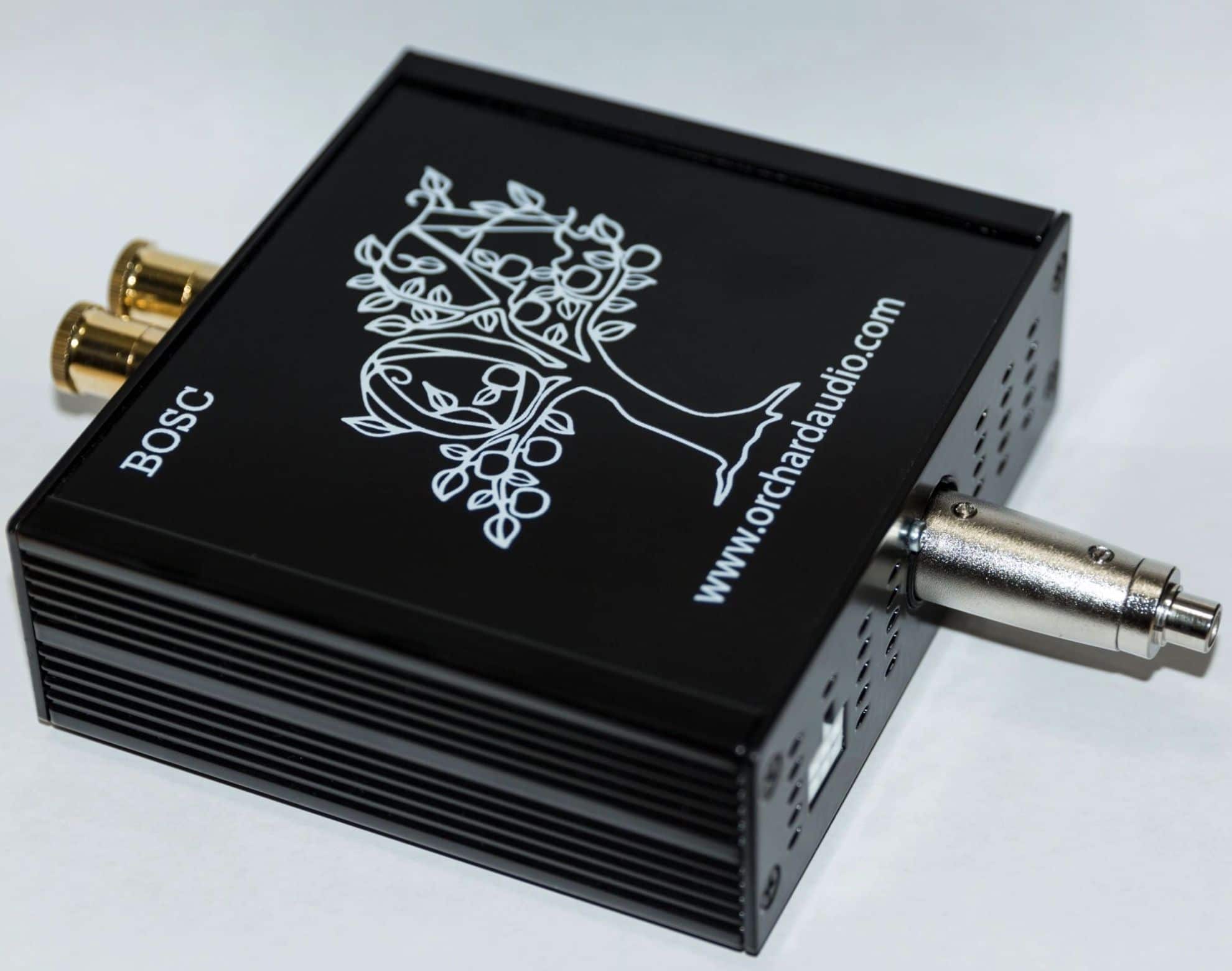
I also wondered how Ayzenshtat saw the amplifiers in practical operation. That is, from his perspective, in an ideal situation, how would these amplifiers slot into a hi-fi chain? “The best use of the amp is to place it close to the speaker and have a speaker cable that is very short. This will also mean that in most cases the connection to the amplifier’s input will be longer, hence the default to a balanced connection, as it is better at reducing noise over longer distances. The balanced connection also makes for an amplifier that is truly balanced from input to output.”
CARE NEEDED
There’s one thing of note that I feel I should add here, as a point of emphasis. Before you use these power amplifiers, be careful how you turn them on or off. Now, the following amounts to good practice anyway in terms of hi-fi operation but Orchard Audio does emphasise that: do not power the amps without speakers connected and do not plug in a live power supply into the amplifier. To turn the amplifier on: connect your speakers, connect the input (XLR or RCA with adapter), then plug-in the power supply into the amplifier (power supply needs to be off, the green light is off), then plug-in power supply into an AC outlet. When turning off, you must unplug from AC outlet and wait at least three minutes for the capacitors to discharge, then remove other connections. And you must do this to avoid damage to the amplifier.
Ayzenshtat added as a point of clarification, “As you may have noticed there is no ‘On’ switch, hence the startup procedure is needed to avoid arcing with the power supply. If at any time you see the LED on the power supply turn off, that means the amp is drawing too much power and you are exceeding it’s power rating of 150W. This is happening to protect the amp from burn out.”
WHAT’S TO BE GAINED?
Gain is an issue for the Orchard power amplifiers using the RCA convertors. At least, it’s a problem if your pre-amplifier is valve-based. Using the latter, I found that I was increasing my pre-amp gain by up to 15 clicks to reach a comparative ‘normal’ volume. Even maxing out my valve pre-amp, I felt as if I wanted more gain. Switching to solid state was fine, you won’t have any issues with this technology because solid state features a lower inherent impedance value. Hence, if you run a valve pre-amp, I would certainly avoid the Orchard power amplifier in RCA mode.
Connecting to valves in balanced mode is a slightly different matter. Yes, I have to increase gain to find a similar volume but seven or eight clicks instead of 15 or so, as in RCA mode. That said, while balanced operation improved matters and you’re given more headroom in this mode, I still didn’t feel wholly comfortable in this configuration.
Personally, I would avoid valves altogether with these power amplifiers.
I must emphasise, using the BOSC power amplifiers with a solid state pre-amp was fine and no issues were experienced using this technology. This is the route you need to take.
I asked Ayzenshtat about this and he commented, “The gain of the amp is 16.8dB. This is much lower that most amps but allows you to use a wider range from your pre-amp or DAC, increasing dynamic range and SNR of overall system.”
SOUND QUALITY
I began with Peggy Lee’s Raindrops album that track Raindrops Keep Fallin’ on my Head. Here, Lee was backed by a full orchestra.
I immediately noticed a major drop in high frequency noise and a swathe of new air and space within the midrange which pushed open the soundstage, expanding it left and right. All of the reconstruction work of the soundstage created a new level of clarity and transparency. Hence, the string section was smooth and flowed, oh so easily while the brass section was most definitely metallic in form without every being bright or edgy.
Lee’s central vocal was now more naturalistic. By that, I mean that subtleties were tripping over themselves to reach your ears. More than that, the earlier reverb, which was stuck onto the voice with a piece of Blu-Tack (or so it seemed) now appeared to feature reverb in a wholly more integrated manner. With the Orchard, vocals soared and provided an emotive delivery. The ear could track every nuance, every micro-mistake and textured emphasis.
Instrumental separation was superb. The space between each musician meant that the character of each instrument was easily seen and followed. That is, instruments tended not to hide in the rear of the mix nor where they blurred into non-existence by more powerful noises. Hence, the soundstage offered a distinct, unambiguous suite of layers. So, in the early parts of the song, there was a flute on the right channel and, distinctly behind it, the percussion entered the fray second after. This sense of imagery and structure created a depth and maturity in the soundstage.
Similarly, rock was impressive. Playing Thin Lizzy’s Chinatown and Having a Good Time, the entire production was large, grand and complex being epic in size and presentation. Bass wasn’t humungous but neither was it insipid. Bass didn’t swamp the mix. Instead, it was full of impact and form but never encroached into those sonic areas where it may have caused damage. It never swamped or masked the mids or fragile treble but remained focused.
Again, there was plenty of space in the midrange which offered all the space required by the complex Snowy White lead guitar, the portentous rhythm guitar and unique Phil Lynott-style vocals.
Turning to the balanced connections now, which meant that I could connect my balanced cables directly to the chassis instead of running through RCA convertors, the sound changed its personality.
Firstly, bass upped the ante. There was much more of it in the soundstage which aided rock output but also helped to balance jazz output too. That said, bass still didn’t step out of line. It retained its discipline and continued to occupy the same areas. The change was in form. Wherever it sat, it offered a greater presence, a larger mass and heft.
Bottom line? The balanced cables added a superior tonal balance across the soundstage while retaining clarity and without masking detail. To get the best from the Orchard, you really need to go balanced. I would go as far as saying that, if your pre-amp does not have balanced outputs, then bypass the Orchard power amplifier. In RCA use, you’re only hearing half of this power amplifier’s potential.
CONCLUSION
Because of its design quirks, the Orchard BOSC monoblocks can be seen as an amplifier for a particular, slightly niche, audience. For those with the correct pre-amp and who have no issues with the form factor, the Orchard will provide a superb suite of sonics. Sound quality is quite sublime for the price, detail, character, clarity, it’s all there. A fascinating power amplifier and definitely one to investigate.
ORCHARD AUDIO BOSC MONOBLOCK AMPLIFIERS Price: $1,500 per pair Website: orchardaudio.com
GOOD: low noise, open mids, tonal realism, dynamic reach, balanced output
BAD: chassis design, RCA convertors, impedance
RATING: 7
[Don’t forget to check out my new Patreon Page at www.patreon.com/audiophileman, for exclusive postings, giveaways and more!]
REFERENCE
Origin Live Sovereign turntable
Origin Live Enterprise 12″ arm
Van Den Hul Crimson XGW Stradivarius Cartridge
Benz MC Gold cartridge
Icon PS3 phono amplifier
Aesthetix Calypso pre-amp
Icon Audio MB845 Mk.II monoblock amplifiers
Quad ESL-57 speakers with One Thing upgrade
Blue Horizon Professional Rack System
Harmonic Resolution Systems Noise Reduction Components
Gutwire Consummate Grounding Cable
All vinyl was cleaned using an Audio Desk’s Ultrasonic Pro Vinyl Cleaner

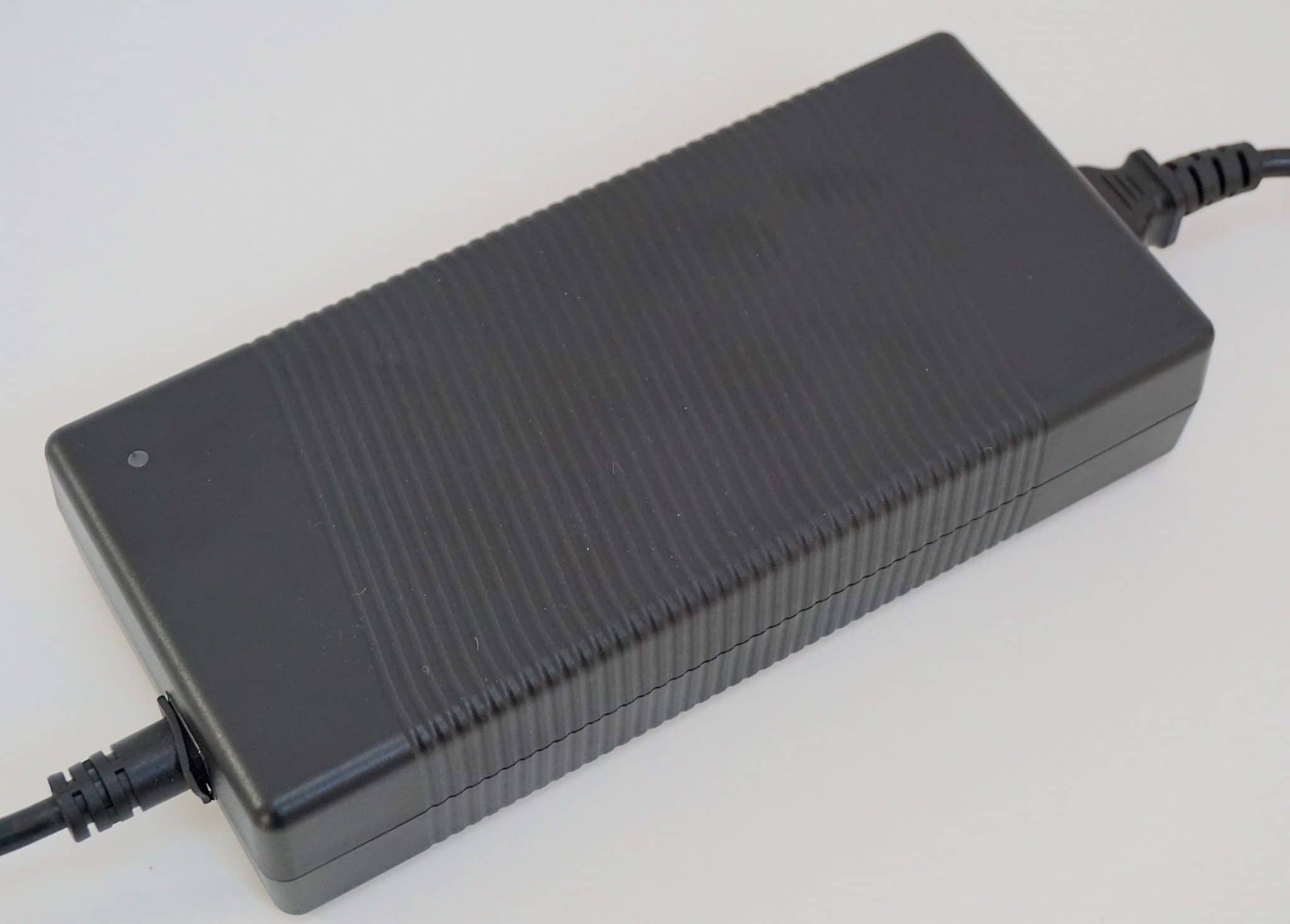
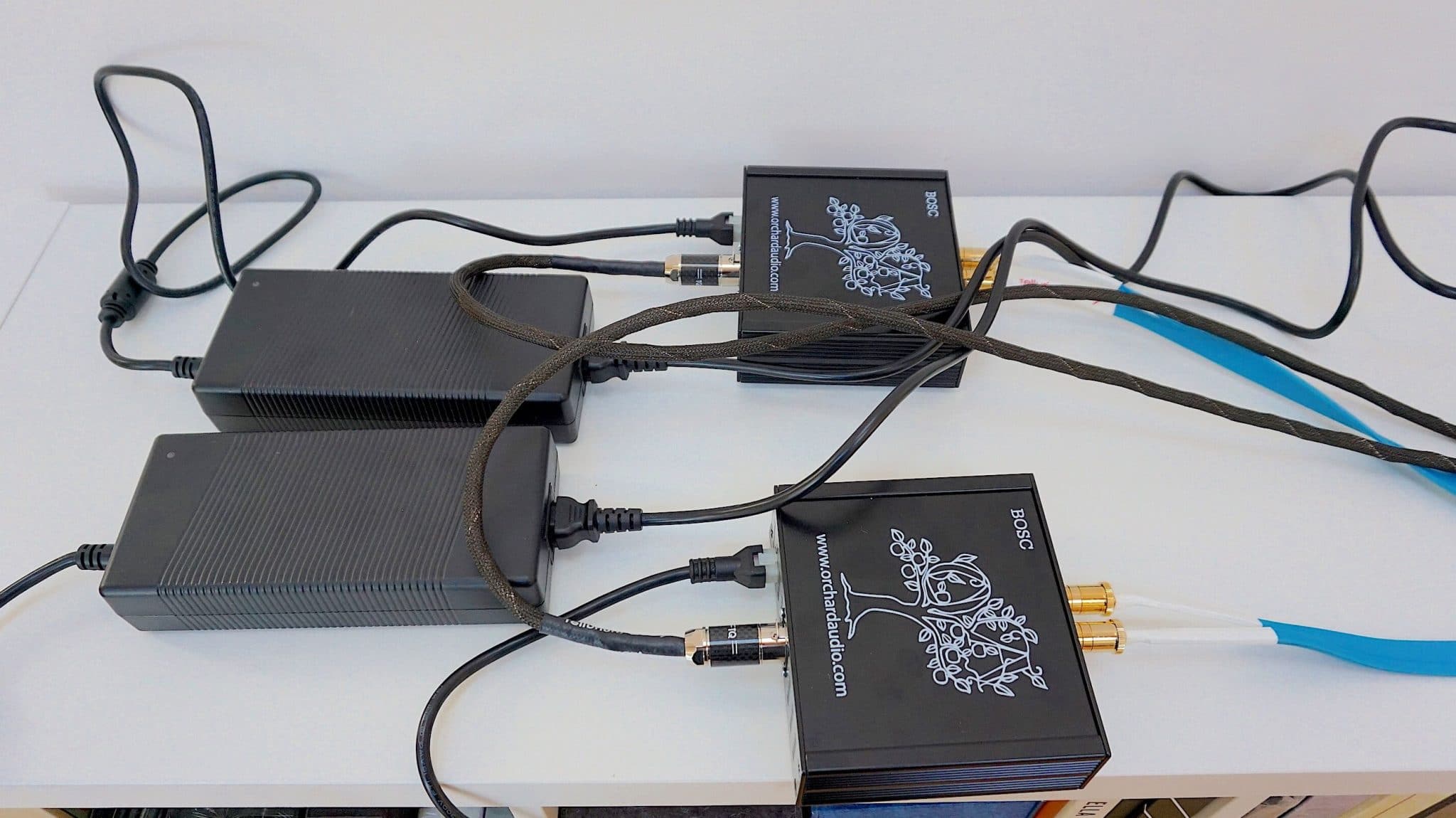
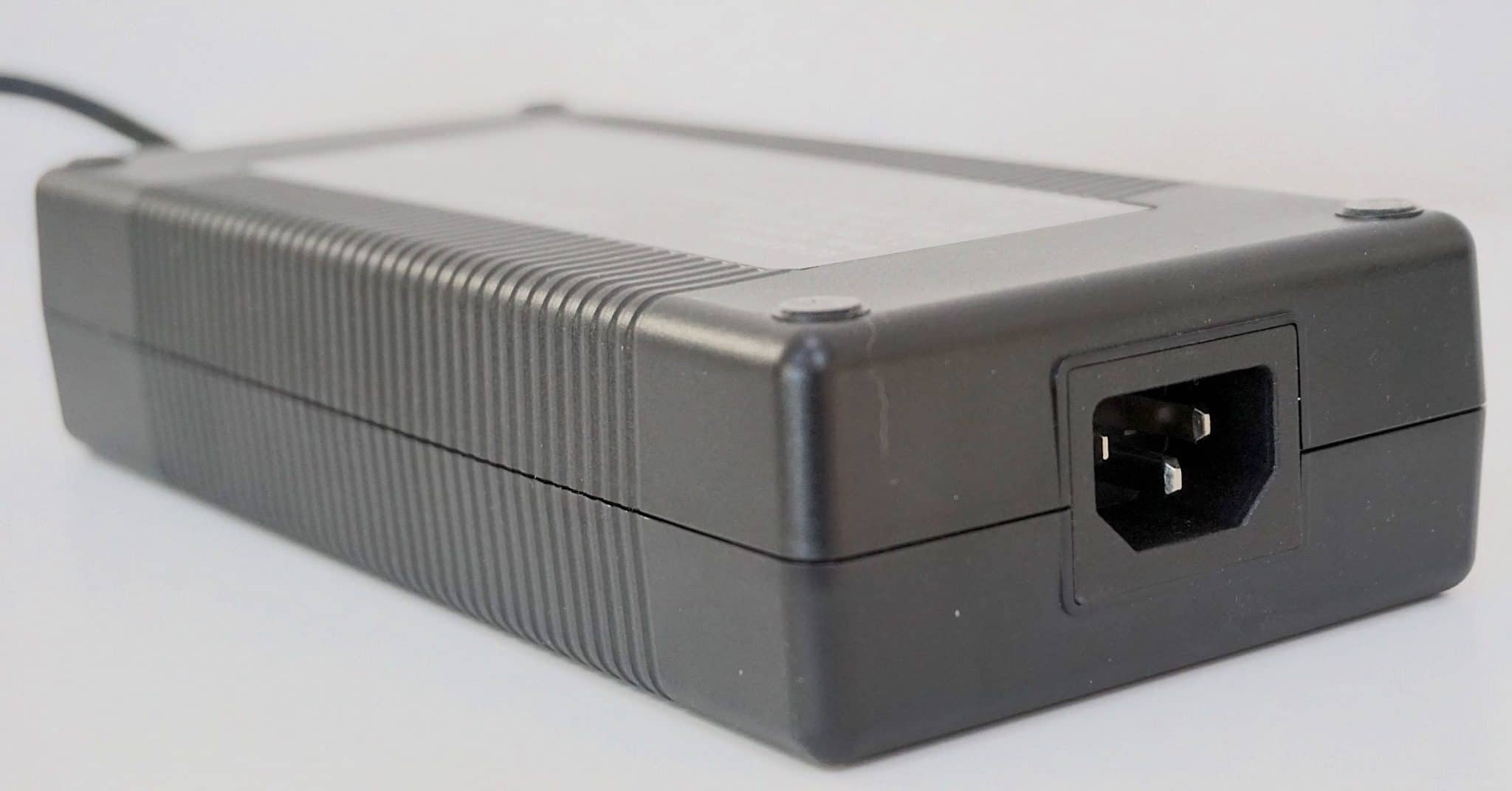
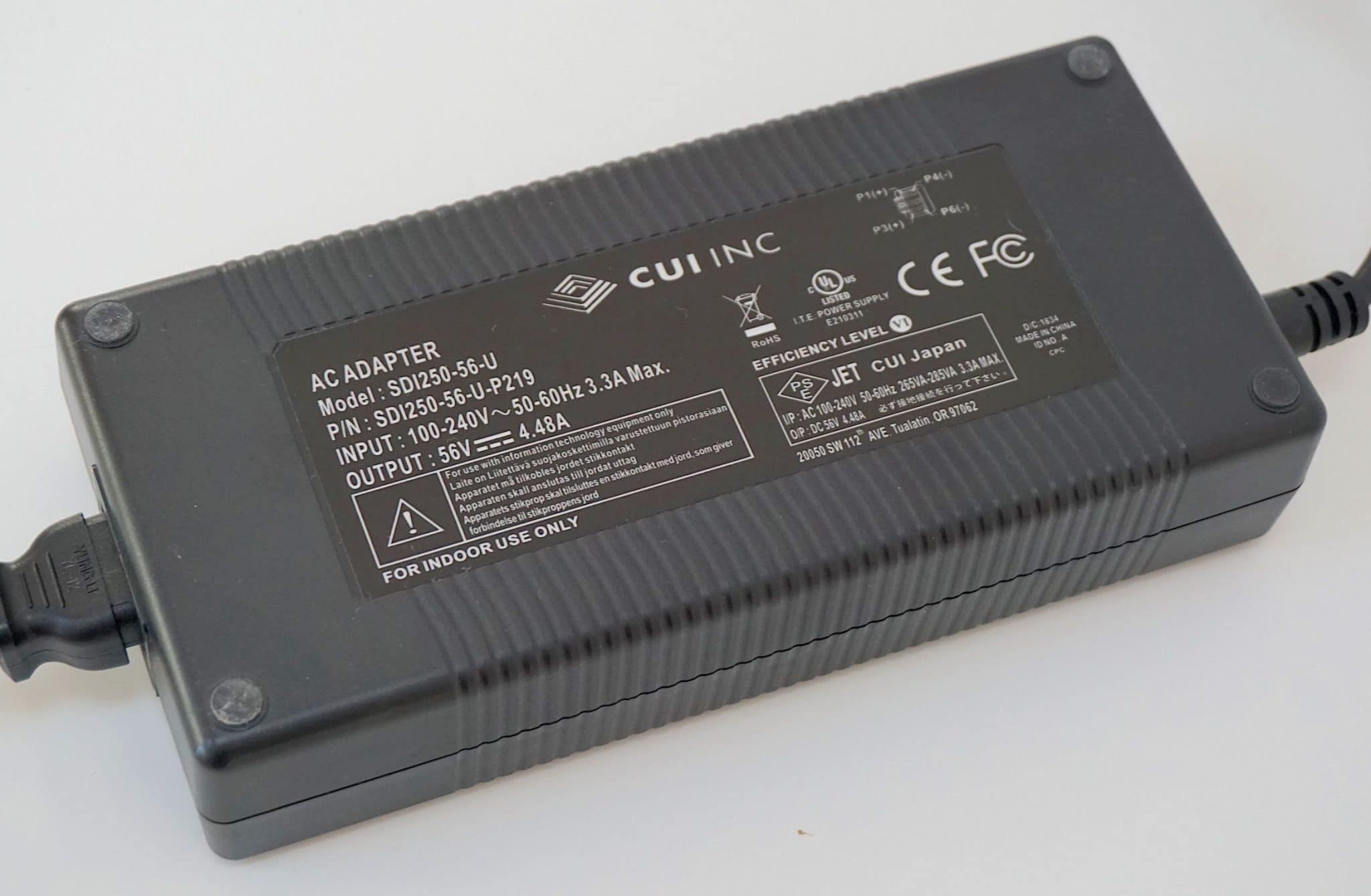
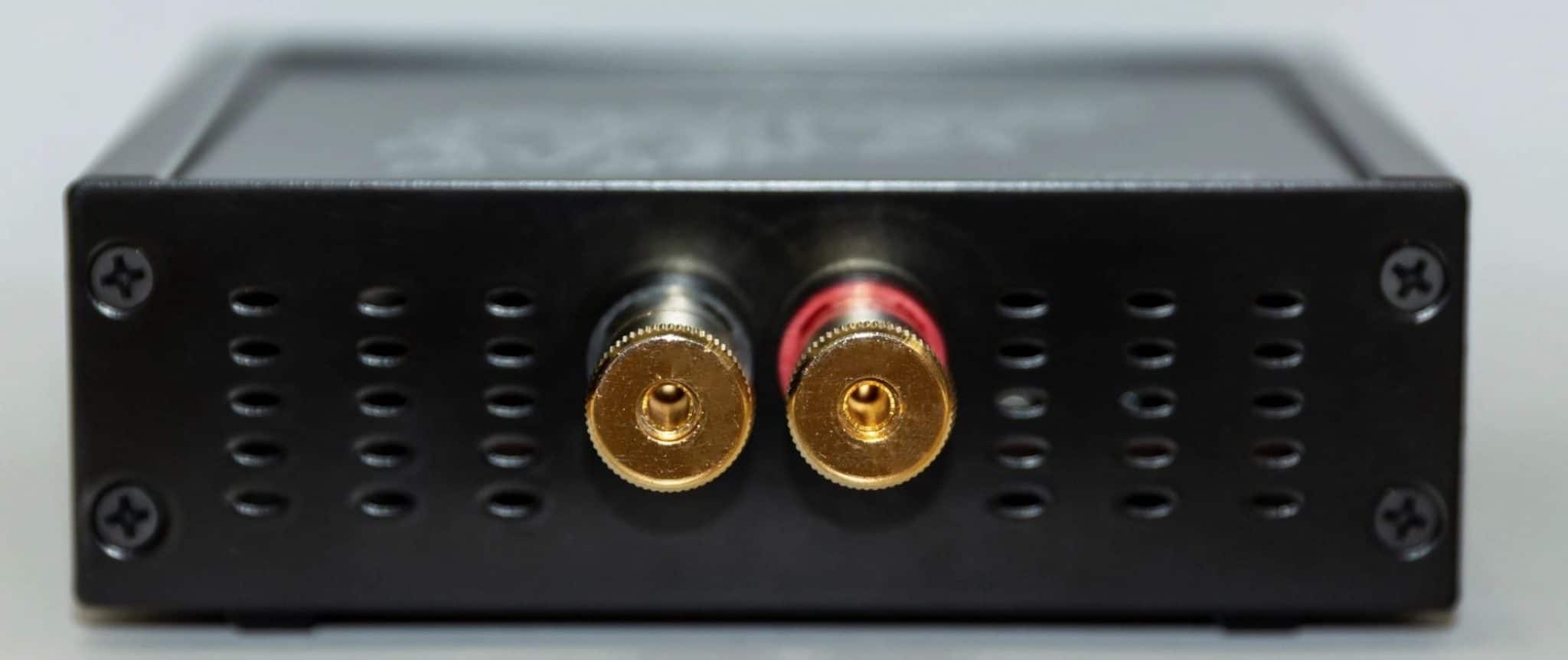
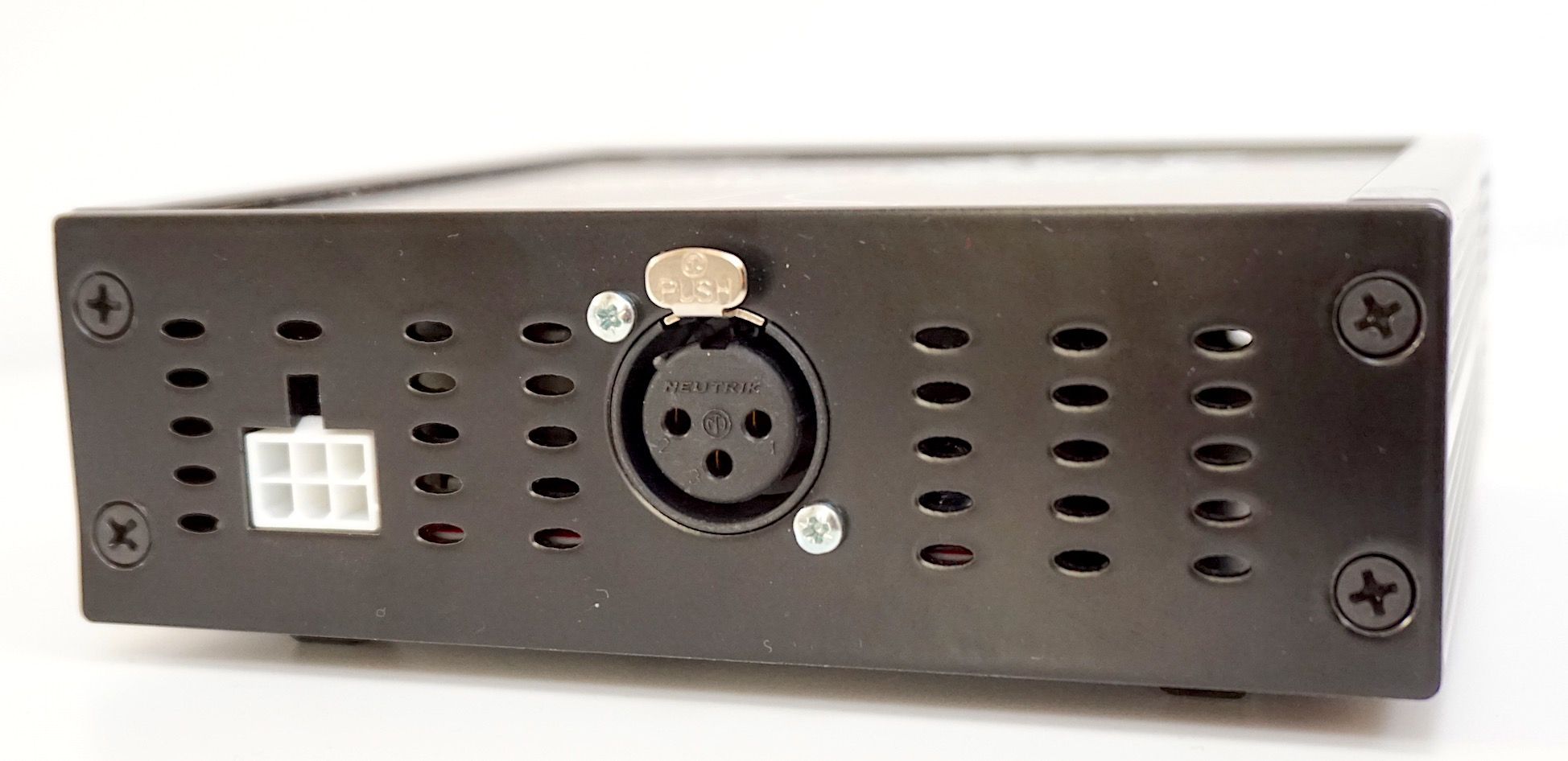
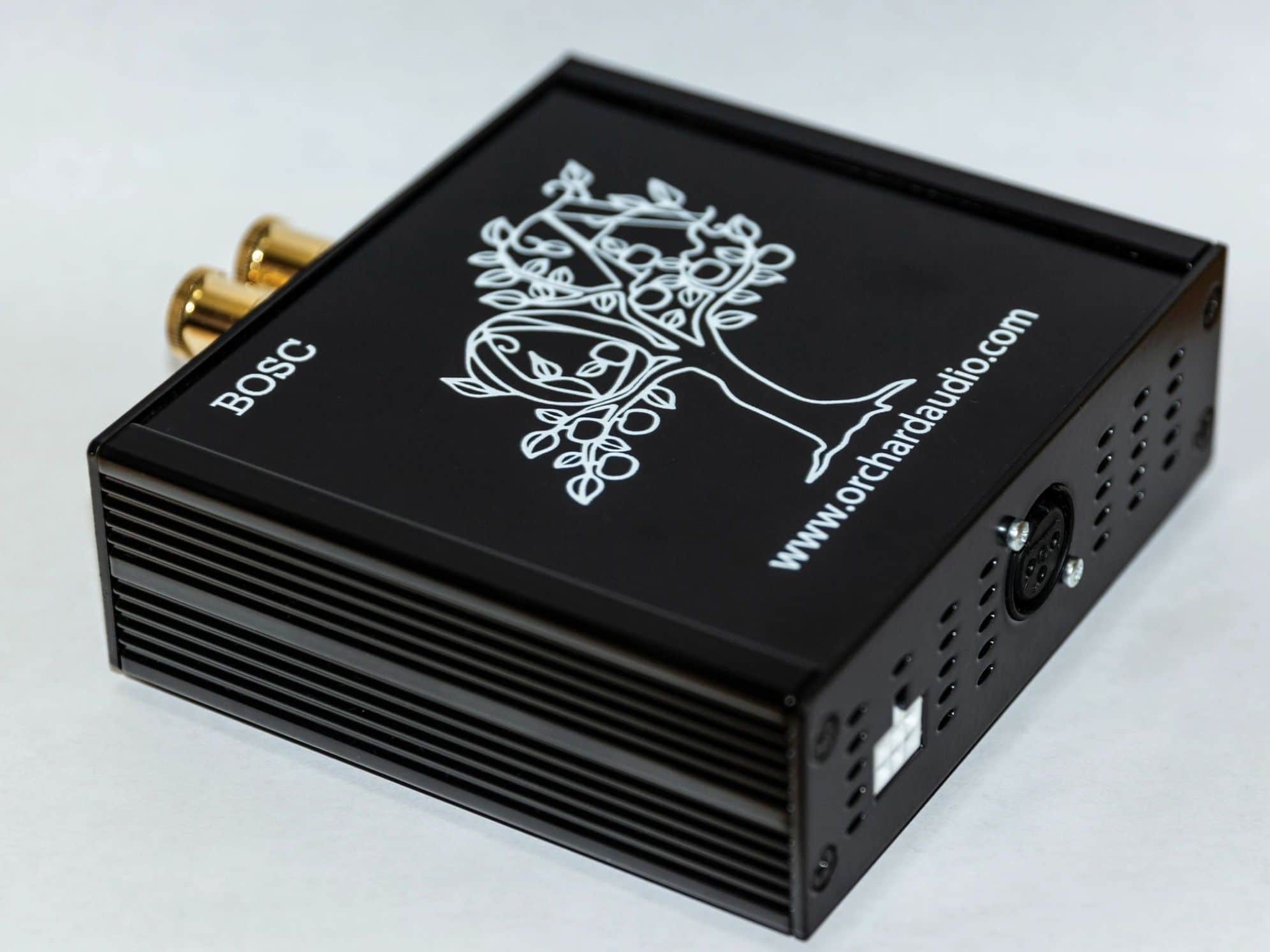
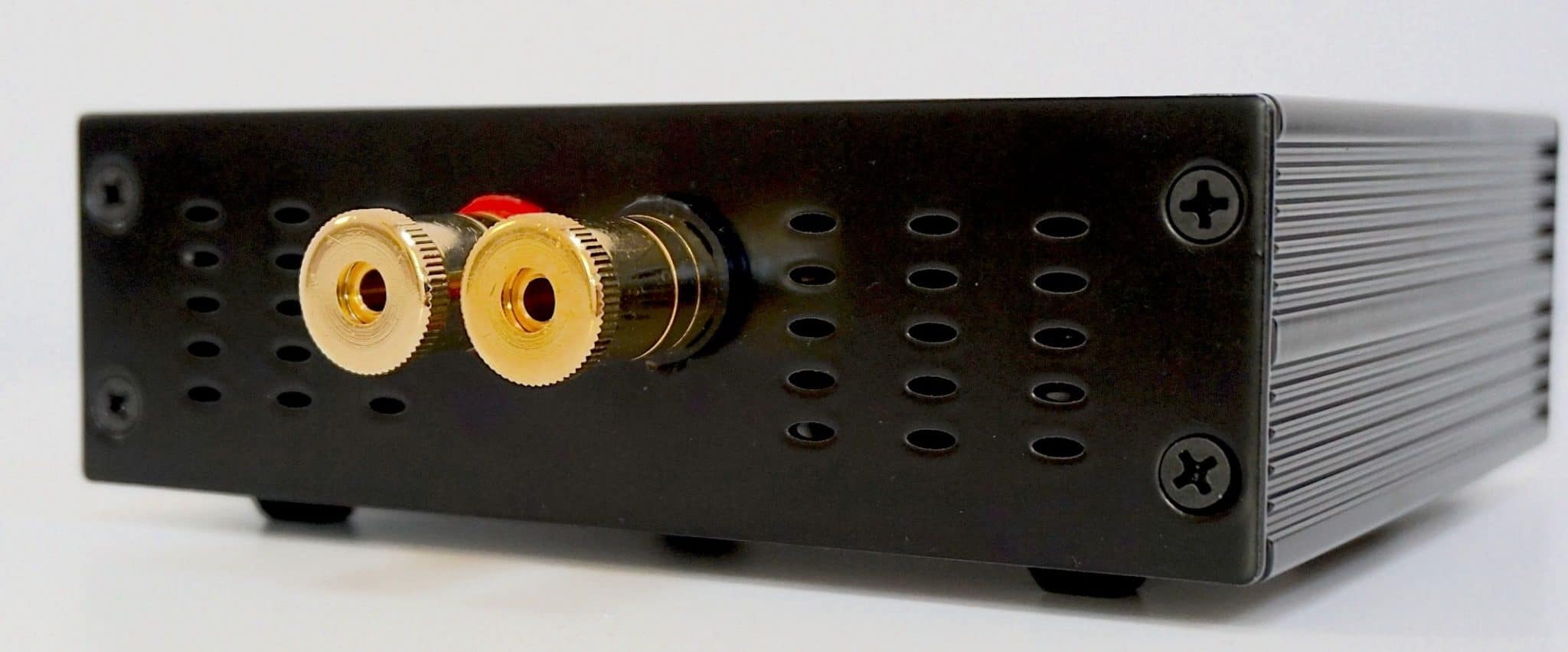


They should add my single 12AU7 preamp / tube buffer, it creates a very pleasing hybrid sound.
I am using one in between the preamp outs and the main ins on my 1975 vintage Sansui, it adds a sweet warmth.
Hi Paul,
In view of your YouTube review and the late breaking news, will you be revising your rating?
Good question, Rob but no. Despite the admirable sound, there’s still several issues that remain and I think the amp remains a niche buy. I didn’t give the amp a bad review, don’t forget. For me, a ‘7’ is a solid rating. The BOSC is a potentially excellent purchase if you fit the bill and you’re happy with the quirks.